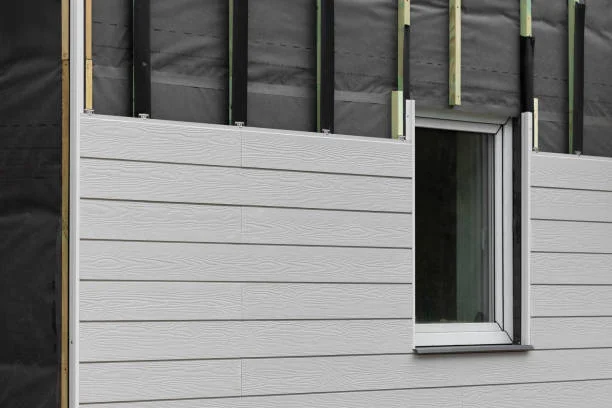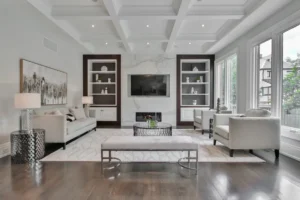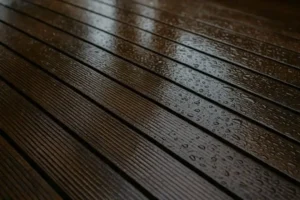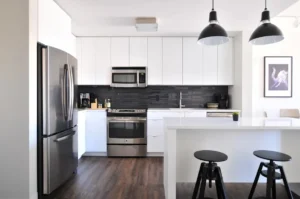On building exteriors, composite cladding has become very popular as an ecologically friendly, long-lasting, aesthetically pleasing substitute for traditional materials. But just how is composite cladding constructed? When one looks at the manufacturing process of this new material, one can see why builders and architects seeking a project combining form and purpose now often pick it.
The Materials Behind Composite Cladding

The first stage in building composite cladding is the deliberate choice of raw materials. Usually, the major components are recycled plastic and wood fibers. These products were chosen as they are ecologically friendly, robust, and long-lasting. Although plastics are often recycled from industrial and post-consumer waste, wood fibers are usually obtained from salvaged wood that would otherwise be thrown away. Apart from ensuring the lifetime of the finished product, this combination encourages sustainability by utilizing material recycling from possible waste sources.
The raw components go through a rigorous processing process after their collection. The wood fibers are cleaned, dried and finely ground to guarantee uniformity, while the polymers are melted to offer a homogeneous substrate. Combining these ready components then forms the basis of the composite cladding.
The Extrusion Process
The production of composite cladding depends critically on the extrusion techniques. Here a homogeneous material is produced by mixing melted plastic with wood fibres. At the molecular level, the components can fuse and bond when the mixture reaches a certain temperature. This heating procedure is closely controlled to guarantee that the components combine consistently and create a strong and durable composite.
Once the materials have been fully blended, the molten composite is fed into an extruder, which molds the mixture into the necessary profile. By running the composite through a die using an extruder, one achieves the exact form and size of the cladding. Customizing the die allows one to create a wide range of cladding designs satisfying various architectural needs.
Coming out of the extruder, the composite cools and solidifies. This important cooling phase locks in the structural integrity and shape of the cladding. The material is chilled under control to ensure that the final product maintains its proper form and dimensions and to prevent warping or deformation.
Surface Polishing and Coating
Surface treating and finishing following the extrusion and cooling procedures help the composite cladding to appear and operate better. Among the most crucial chores at this stage is applying a protective cap layer. Usually made of a polymer, this layer co-extrudes with the composite core to generate a long-lasting, smooth surface. Apart from shielding the product from UV light, moisture, and other outside factors, the cap layer enhances the texture and color of the component.
Further phases in the surface treatment process are texturing and adding color pigments. The pigments are mixed into the polymer cap during extrusion to give consistent color distribution and fade resistance. Conversely, depending on the design decisions, texturing may either give a more contemporary finish or emulate the appearance of genuine wood grain. Thanks to its plasticity in color and texture, the composite cladding may be utilized to satisfy a range of aesthetic criteria, including traditional and modern ones.
Apart from their appearance, the surface treatment increases the lifetime of the cladding. The protective top layer makes the cladding rather resistant to stains, scratches, and mold development, therefore reducing maintenance needs and extending product lifetime. The longevity of composite cladding is one of the key reasons it is becoming more and more used in both home and business uses.
Assurance of Quality and Testing
Quality control is an essential phase in composite cladding manufacture. Rigor testing every batch of cladding ensures it meets the required criteria for environmental resistance, strength, and longevity. Apart from assessing the resilience of the material to UV light, moisture, and temperature variations, testing also looks for consistency in color, texture, and dimensional accuracy.
Mechanical tests are also conducted to evaluate the structural integrity of the material so that the cladding may withstand the stresses of installation and extended use. These tests are meant to replicate real climatic conditions, therefore ensuring that, once installed, the composite cladding will perform as expected.
Only distribution of the composite timber cladding is approved following thorough rigors quality control examinations. This commitment to quality makes every piece of cladding useful and aesthetically pleasing for the projects architects and builders rely on.
Conclusion
The manufacturing of composite cladding is a complex and painstakingly controlled process combining environmental consciousness with technology. From the precision extrusion method and the strict quality control processes to the careful use of recycled components, every stage of the process is meant to produce a strong, attractive, and ecologically responsible product. Composite cladding offers a versatile solution for builders and architects looking to produce environmentally responsible buildings combining longevity and aesthetic appeal. As demand for sustainable building materials rises, composite cladding sticks out as a modern, ethical choice that meets the needs of the present construction sector.











